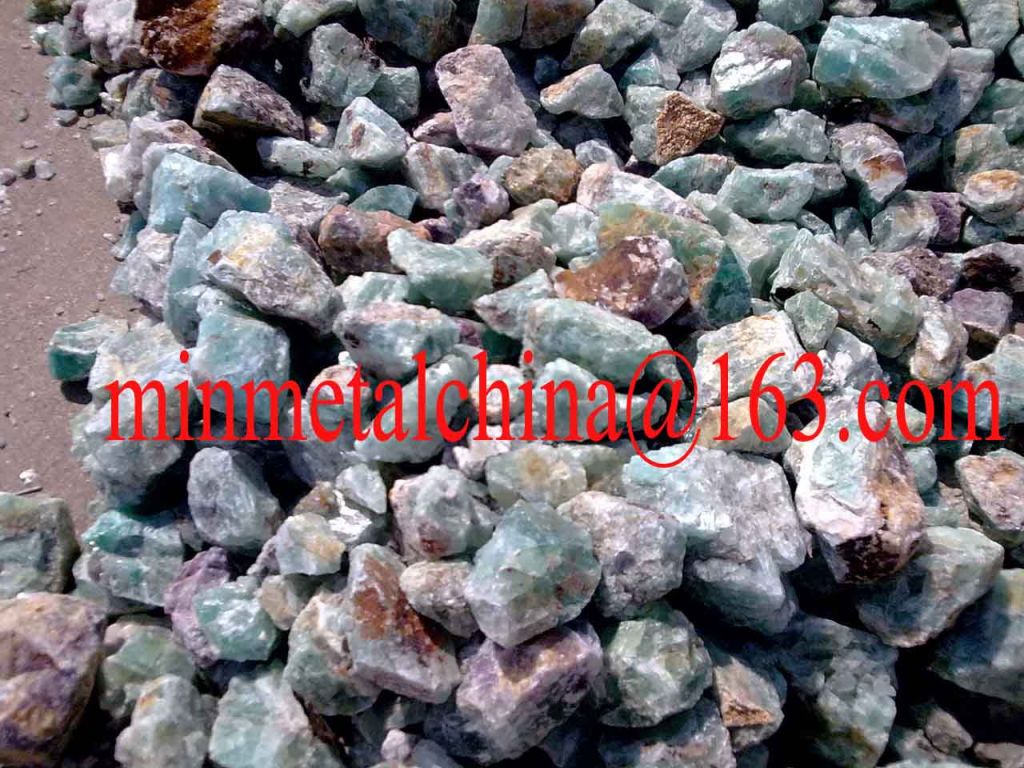Description
FLUORSPAR LUMP
Commodity: Fluorspar Lump
(1) Specs. : CaF2: *5% MIN
SiO2: 3% MAX
Size: ****0mm *0% min
Packing: 1 mtons per bag
(2) Specs. : CaF2: *2% MIN
SiO2: 6% MAX
Size: ****0mm *0% min
Packing: 1 mtons per bag
(3) Specs. : CaF2: *0% MIN
SiO2: 8% MAX
Size: ****0mm *0% min
Packing: 1 mtons per bag
(4) Specs. : CaF2: *5% MIN
SiO2: *4% MAX
Size: ****0mm*0% min
Packing: 1 mtons per bag
(5) Specs. : CaF2: *5% MIN
SiO2: *0% MAX
Size: ****0mm *0% min
Packing: 1 mtons per bag
email: *@********************orite (also called fluorspar) is a halide mineral composed of
calcium fluoride, CaF2. It is an isometric mineral with a cubic
habit, though octahedral and more complex isometric forms are not
uncommon. Crystal twinning is common and adds complexity to the
observed crystal habits.
The word fluorite is derived from the Latin root fluo, meaning "to
flow" because the mineral is used to increase the fluidity of slags
used in smelting flux. This increase in fluidity is the result of
the ionic nature of the mineral. The melting point of pure calcium
fluoride is ***6 K. In ***2 fluorite gave its name to the
phenomenon of fluorescence, which is prominent in fluorites from
certain locations, due to certain impurities in the crystal.
Fluorite also gave the name to its constitutive element
fluorine.
Flourite is a colorful mineral, both in visible light and often
under ultraviolet, and the stone has ornamental and lapidary uses.
Industrially, fluorite is used as a flux for smelting, and in the
production of certain glasses and enamels. The purest grades of
fluorite are a source of fluoride for hydrofluoric acid
manufacture, which is the intermediate source of most
fluorine-containing fine chemicals. Optically-clear transparent
fluorite lenses have low dispersion, so lenses made from it exhibit
less chromatic aberration, making them valuable in microscopes and
telescopes. Fluorite optics are also usable in the far-ultraviolet
range where conventional glasses are too absorbent for use.
